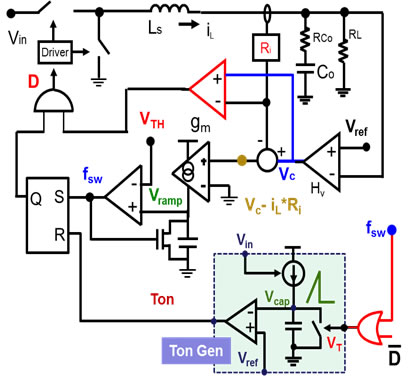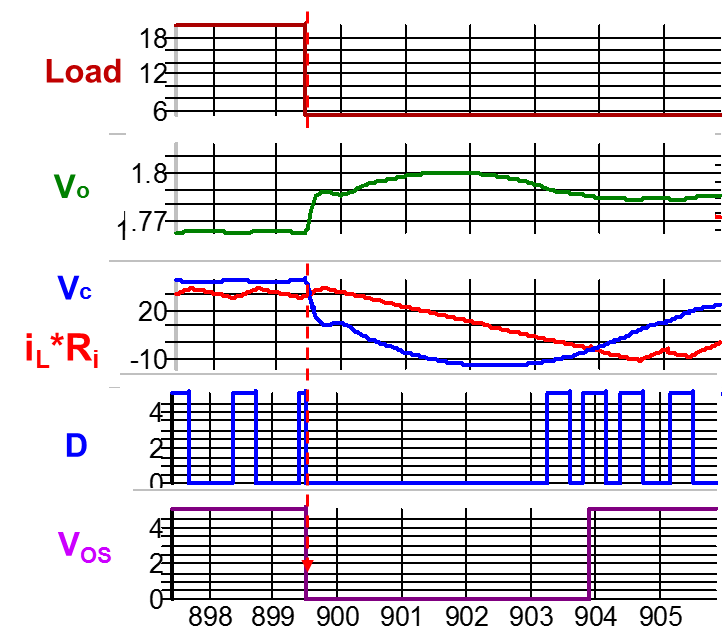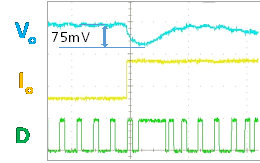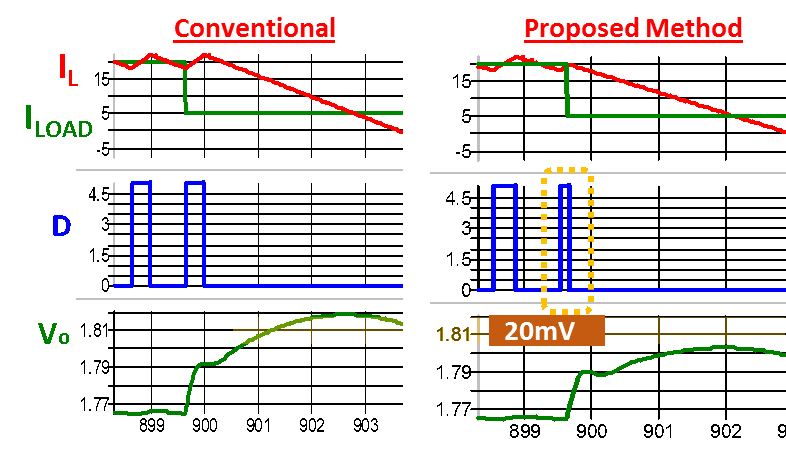LIBRARY
A New Inverse Charge Constant On-time (IQCOT) Control with Ultrafast Load Transient Response

The proposed IQCOT structure is presented in the Fig. 1 where the difference between Vc and IL*Ri is converted into current by using a gm amplifier and this current is used to charge a capacitor. Then this capacitor voltage (Vramp) is compared with a fixed threshold voltage (VTH) to create pulse frequency fsw. When Vramp touches VTH, off time ends and a fixed on time (Ton) is started. In case of a large load step up transient, when Vc-IL*Ri becomes very large, fsw pulses can occur even before the end of previous on time. Now if these very close pulses are allowed to merged together to create a longer on time (Fig. 2), a significant undershoot reduction can be done at the output. Fig. 4 and 5 show that the Vout undershoot can be reduced by naturally in-creasing the Ton using the pulse merging feature of the proposed control. Another important feature is, as the fsw pulse increment is proportional to Vc-IL*Ri (Fig. 2), the Ton extension is eventually linearly proportional to the Vout undershoot. This will eliminate any chance of over-correction or ring-back of Vout which is a major problem in a fixed Ton extension method by nonlinear controls. Fig 3 shows that when an overshoot is created in Vout at load step down, Vc goes down very quickly and cross the IL*Ri which can be used to create a logic (like Vos in Fig. 3) and use it to truncate the constant Ton immediately in order to reduce the Vout overshoot (as shown in Fig. 6).



























































































